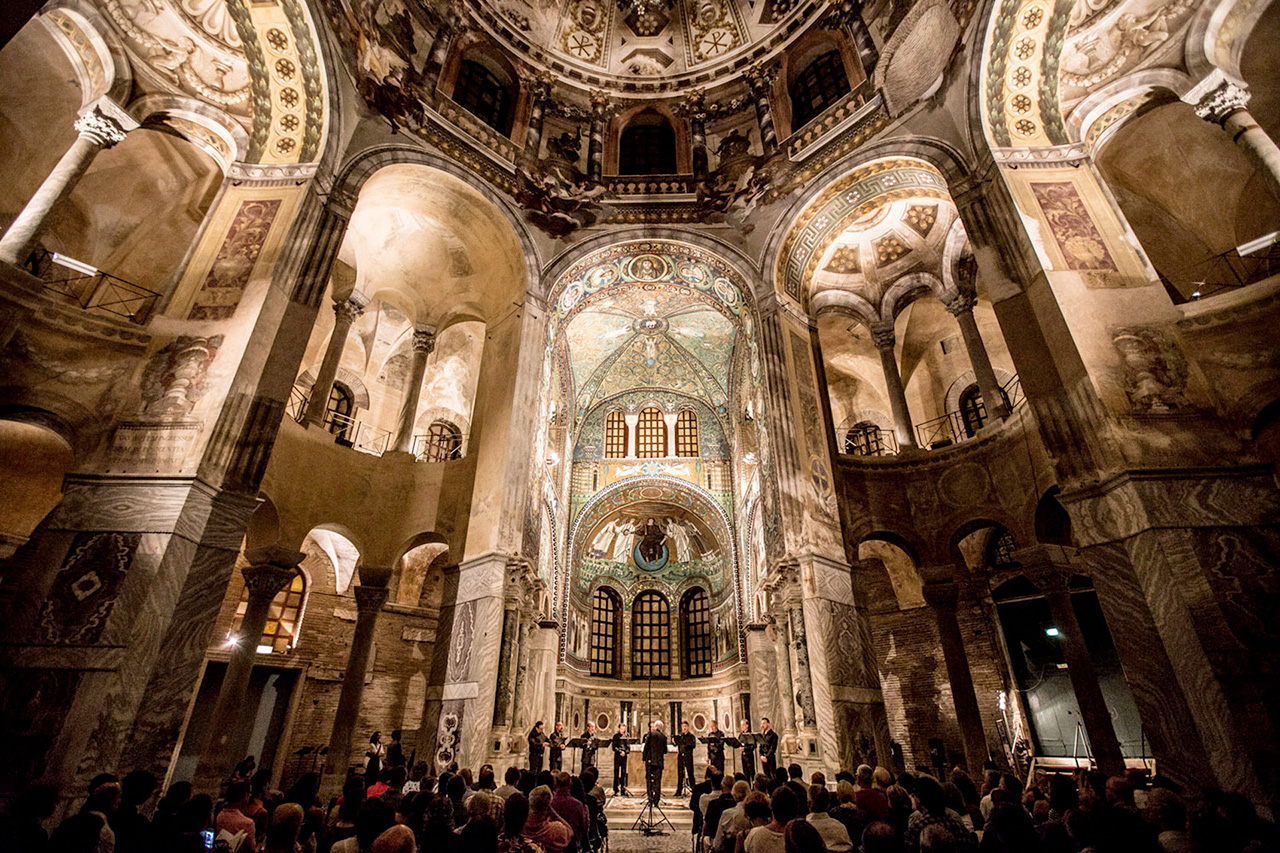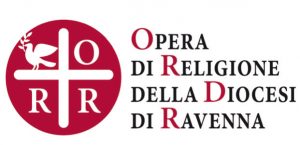© Luca Concas
The Vespers at San Vitale
Piero Bonaguri guitar
The sacred repertoire: from the Middle Ages to the present
1, 3, 5 July
Franco Cavallone (1957)
Introito da Per il tempo di Pasqua*
(prima esecuzione assoluta)
Andrea Vezzoli (1982)
Tre pezzi sacri*
Josquin Des Prez (1450-1521) / Luys De Narváez (1500-1550/1560)
Sanctus y Hosanna dalla Messa “Faysant Regretz”
Luys De Narváez
Fantasia XIV
O Gloriosa Domina (Diferencias 1, 3, 4)
Marco Reghezza (1968)
Fuga su O Gloriosa Domina*
Fernando Sor (1778-1839)
Moumevent de Prière Religieuse
Studio in si bemolle
Wolfgang Amadeus Mozart (1756-1791)
Adagio per Glasharmonika**
Joaquín Rodrigo (1901-1999)
Andantino da Elogio de la Guitarra
Anonimo – Vicente Emilio Sojo (1887-1974)
Cantico
Salve
Nino Lindo
Pippo Molino (1947)
Frammento F*
Paolo Bonaguri (1927)
Offertorio*
(prima esecuzione italiana)
Alessandro Spazzoli (1964)
Gloria*
2, 4 July
Johann Sebastian Bach (1685- 1750)
Preludio BWV 998
Anonimo (XIII secolo)
Kyrie** dalla Messa di Tournai
Reginald Smith Brindle (1917-2003)
De Angelis (da un canto gregoriano)
Tomás Luis De Victoria (1548-1611)
Caligaverunt**
Josquin Des Prez (1450-1521) / Luys De Narváez (1500-1550/1560)
Hosanna dalla Messa “Hercules Dux Ferrariae”
Marco Simoni (1972)
Sicut Dies Illuminabitur*
(prima esecuzione italiana)
Paolo Ugoletti (1756)
Quasi Modo
Fuga*
Lugi Dallapiccola (1904-1975)
Adagio**
Mario Castelnuovo-Tedesco (1895-1968)
Campane a valle
Ave Maria (da Appunti)
Alessandro Spazzoli
Arietta (per Santa Teresa)*
Gilberto Cappelli (1952)
A Teresa, in un dolcissimo tramonto*
* composto per Piero Bonaguri
** trascritto da Piero Bonaguri
The programme only covers a very small portion of a large repertoire of sacred music that can be performed on the guitar. Among the different currents, one includes music originally scored for the classical guitar, which testifies to the interest in sacred music of such authors as Fernando Sor, who studied at the monastery of Monserrat; Joaquìn Rodrigo, whose Andantino evokes an ancient cathedral in Castile; Mario Castelnuovo-Tedesco, a Jew who dedicated some of his Appunti per chitarra to the Virgin Mary; and Reginald Smith Brindle, who, at the height of the twentieth century, proposed his own guitar version of the Kyrie from the Mass of the Angels.
A rich sacred repertoire exists for the lute and the vihuela, represented here by Bach’s Prelude BWV 998, and preceded by such Renaissance authors as the Spanish Luys de Narvàez, who worked at the court of King Charles V. He composed his own sacred music for the vihuela (like the variations on the Gregorian hymn O Gloriosa Domina), as well as intabulations of works from the great Flemish vocal polyphonic repertoire (like selections from masses by Des Prez).
Following the illustrious example of the Vihuelists, in my turn, I have transcribed some sacred (or sacred-like) music from different periods and for various ensembles: a part of the anonymous Tournai Mass for three voices (the first example of complete polyphonic mass), the famous choral responsory Caligaverunt by Tomás Luis De Victoria, Mozart’s famous Adagio for glass harmonica KV 617, and Dallapiccola’s third Adagio for solo cello (1946), which foreshadows the composer’s embracing of the twelve-tone technique.
As far as contemporary composers are concerned, I am proud of the sacred music several well-known masters have written for me (Gilberto Cappelli, Paolo Ugoletti, Pippo Molino, Marco Reghezza, Alessandro Spazzoli, Franco Cavallone, Marco Simoni, Andrea Vezzoli, and my own father, Paolo Bonaguri).
And lastly, the programme features sacred folk music: three of Vicente Emilio Sojo’s beautiful arrangements from the vast repertoire of Venezuelan folk songs, transcribed for the guitar by Alirio Diaz, a great master I had the good fortune to study with.


